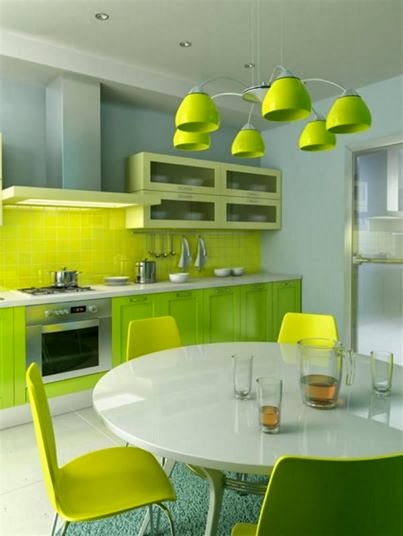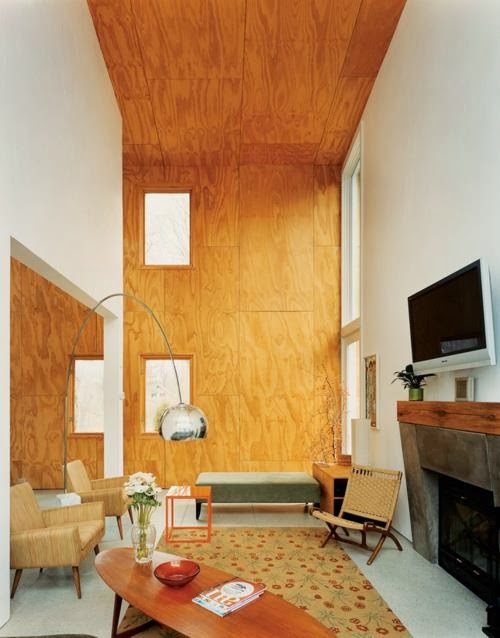Most MDF is manufactured by a dry process - the wood fibres are dried before they are formed into a mat for pressing. The high strength of MDF is achieved by the addition of a synthetic resin binder. Wet process MDF relies on the lignin naturally occurring in the wood to bind the fibres; it is generally not as strong and more susceptible to moisture absorption. The typical density range of MDF is 600-900 kg/m3.
Hardboard & HDF
To make HDF and hardboard, the wood fibres are exploded and highly compressed. The high temperature and pressure used in the wet process to make hardboard eliminates the need for added resin binder; however, resin may still be added for greater strength. HDF is a dry process board and is made the same way as MDF. The names of HDF and hardboard are often used interchangeably. The typical density range of MDF and hardboard is 800-1040 kg/m3.
Usage of Wood Based Panels in India
Plywood is the oldest WBPM and still the largest selling intIndia. However, the Plywood industry faces problems due to shortages as well as increasing cost of raw materials. This has contributed to the rapid increase of production and usage of particle board and MDF in India. Though ply, PB and MDF all use timber as a raw material, the conversion ratio of raw material to finished product is much higher in MDF and PB. Furthermore, it is only MDF and PB which can use any waste wood/ plantation timber of any size, or even other non-wood ifbres such as bagasse, which is agro waste from sugar cane. The usage and application of PB is limited to vertical and horizontal applications only, whereas MDF can be used in a variety of applications where natural timber/plywood is used.
General Advantages of MDF
A. Wide range of sizes and thicknesses available:
Available thicknesses: 2.3mm, 2.7mm, 3mm, 3.6mm,4mm, 4.75mm,5mm, 5.2mm, 5.5mm, 6mm, 7.5mm, 7.8mm, 8mm, 9mm, 1omm, 11mm, 12mm, 15mm, 16mm, 17mm, 18mm, 25mm & 30mm. Available sizes: 4'X6', 4'X8', 6'X8', 6'X12', etc.
B. Availability of raw materials:
MDF is commonly made from rubberwood, acacia, poplar, causarina, albizia, eucalyptus or pine as raw materials. Most of these species are fast growing plantation varieties, easily available and need to be cut and replanted in periodical intervals. Species whose timber is not otherwise commercially viable may be used for production of MDF. Wood waste from sawmilling / manufacturing and agro waste fibres such as bagasse or rice stalks can also be also used to make MDF.
Unique Advantages of Plywood
A. Wide range and grade to suit each and every application.
B. High load bearing capacity due to the cross placed nature of veneers
C. Easy workability
D. Easy availability because of more number of producers
E. Retain the natural look of timber on the face
F. Termite and water resistant
G. Special grades with fire-resistant quality also available
H. High Modulus of Rupture
l. High level of carpenter's acceptance
Limitations of Plywood
A. Chances of delamination because of the existence of layers
B. Will splinter while cutting
C. Cannot be machined or carved
D. Thickness tolerance very high
E. Low tensile strength
F. High cost
Unique Advantages of Particle Board
A. Does not delaminate
B. Edges can be moulded and shaped with special tools
C. Smoother surface (100 grit finish) and edge
D. Adequate levels of modulus of rupture and tensile strength
Limitations of Particle Board
A. Thickness range is limited - starts from 8mm only, whereas plywood starts from 3mm and MDF from 2.3mm
B. Requires skilled labour and special tools and fittings
C. Poor capacity to retain screws and nails
D. Requires edge banding/lipping
E. Proper care should be taken against moisture related problems.
Unique Advantages of MDF
A. Does not delaminate since there are no layers
B. Edges can be moulded and shaped just like solid timber
C. Does not splinter
D. Excellent capacity to retain screws and nails
E. Can be carved on face and edge like expensive varieties of natu timber
F. Can be joined, rebated, turned, and grooved like solid timber
G. Smoother surface (140-160 grit finish) and edge
H. High Modulus of Rupture and tensile strength
Limitations of MDF
A Proper care should be taken against moisture related problems The main problem area where extra care must be taken with MDF and PB usage is in moisture prone applications. This can be tackled by using special grades like MR grade and proper sealing of edges and surfaces with laminations, coatings or sealants.
Most varieties of wood based panel materials are resistant to termit and other insects. This quality is achieved by adding formaldehyde the binder during manufacturing process. The poisonous content formaldehyde resists termite attack.
As WBPM offers the feel, look and richness of natural wood, i acceptance and popularity is ever increasing. As long as proper care' taken while converting WBPM into end applications, it offers excelle value for money.
Just Call Toll Free-1800-102-2999 and Share MDF new article at Twitter and Facebook.
Auther Bio
Mr.Mannan is a web specialist associated with Atechnocrat Solution written a quality based articles on MDF, MDF manufacturer, MDF panels, MDF board, MDF suppliers, MDF in India, modular kitchen, MDF suppliers, MDF furniture and medium density board.
Hardboard & HDF
To make HDF and hardboard, the wood fibres are exploded and highly compressed. The high temperature and pressure used in the wet process to make hardboard eliminates the need for added resin binder; however, resin may still be added for greater strength. HDF is a dry process board and is made the same way as MDF. The names of HDF and hardboard are often used interchangeably. The typical density range of MDF and hardboard is 800-1040 kg/m3.
Usage of Wood Based Panels in India
Plywood is the oldest WBPM and still the largest selling intIndia. However, the Plywood industry faces problems due to shortages as well as increasing cost of raw materials. This has contributed to the rapid increase of production and usage of particle board and MDF in India. Though ply, PB and MDF all use timber as a raw material, the conversion ratio of raw material to finished product is much higher in MDF and PB. Furthermore, it is only MDF and PB which can use any waste wood/ plantation timber of any size, or even other non-wood ifbres such as bagasse, which is agro waste from sugar cane. The usage and application of PB is limited to vertical and horizontal applications only, whereas MDF can be used in a variety of applications where natural timber/plywood is used.
General Advantages of MDF
A. Wide range of sizes and thicknesses available:
Available thicknesses: 2.3mm, 2.7mm, 3mm, 3.6mm,4mm, 4.75mm,5mm, 5.2mm, 5.5mm, 6mm, 7.5mm, 7.8mm, 8mm, 9mm, 1omm, 11mm, 12mm, 15mm, 16mm, 17mm, 18mm, 25mm & 30mm. Available sizes: 4'X6', 4'X8', 6'X8', 6'X12', etc.
B. Availability of raw materials:
MDF is commonly made from rubberwood, acacia, poplar, causarina, albizia, eucalyptus or pine as raw materials. Most of these species are fast growing plantation varieties, easily available and need to be cut and replanted in periodical intervals. Species whose timber is not otherwise commercially viable may be used for production of MDF. Wood waste from sawmilling / manufacturing and agro waste fibres such as bagasse or rice stalks can also be also used to make MDF.
Unique Advantages of Plywood
A. Wide range and grade to suit each and every application.
B. High load bearing capacity due to the cross placed nature of veneers
C. Easy workability
D. Easy availability because of more number of producers
E. Retain the natural look of timber on the face
F. Termite and water resistant
G. Special grades with fire-resistant quality also available
H. High Modulus of Rupture
l. High level of carpenter's acceptance
Limitations of Plywood
A. Chances of delamination because of the existence of layers
B. Will splinter while cutting
C. Cannot be machined or carved
D. Thickness tolerance very high
E. Low tensile strength
F. High cost
Unique Advantages of Particle Board
A. Does not delaminate
B. Edges can be moulded and shaped with special tools
C. Smoother surface (100 grit finish) and edge
D. Adequate levels of modulus of rupture and tensile strength
Limitations of Particle Board
A. Thickness range is limited - starts from 8mm only, whereas plywood starts from 3mm and MDF from 2.3mm
B. Requires skilled labour and special tools and fittings
C. Poor capacity to retain screws and nails
D. Requires edge banding/lipping
E. Proper care should be taken against moisture related problems.
Unique Advantages of MDF
A. Does not delaminate since there are no layers
B. Edges can be moulded and shaped just like solid timber
C. Does not splinter
D. Excellent capacity to retain screws and nails
E. Can be carved on face and edge like expensive varieties of natu timber
F. Can be joined, rebated, turned, and grooved like solid timber
G. Smoother surface (140-160 grit finish) and edge
H. High Modulus of Rupture and tensile strength
Limitations of MDF
A Proper care should be taken against moisture related problems The main problem area where extra care must be taken with MDF and PB usage is in moisture prone applications. This can be tackled by using special grades like MR grade and proper sealing of edges and surfaces with laminations, coatings or sealants.
Most varieties of wood based panel materials are resistant to termit and other insects. This quality is achieved by adding formaldehyde the binder during manufacturing process. The poisonous content formaldehyde resists termite attack.
As WBPM offers the feel, look and richness of natural wood, i acceptance and popularity is ever increasing. As long as proper care' taken while converting WBPM into end applications, it offers excelle value for money.
Just Call Toll Free-1800-102-2999 and Share MDF new article at Twitter and Facebook.
Auther Bio
Mr.Mannan is a web specialist associated with Atechnocrat Solution written a quality based articles on MDF, MDF manufacturer, MDF panels, MDF board, MDF suppliers, MDF in India, modular kitchen, MDF suppliers, MDF furniture and medium density board.

 About the Author
About the Author RSS
RSS Like
Like Follow
Follow





0 comments: